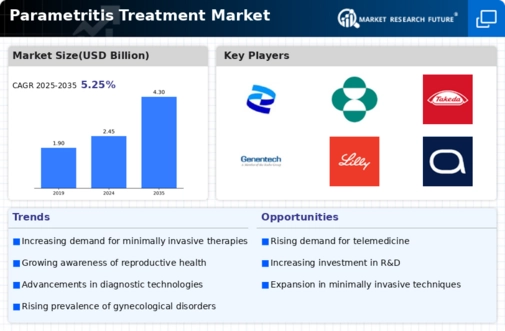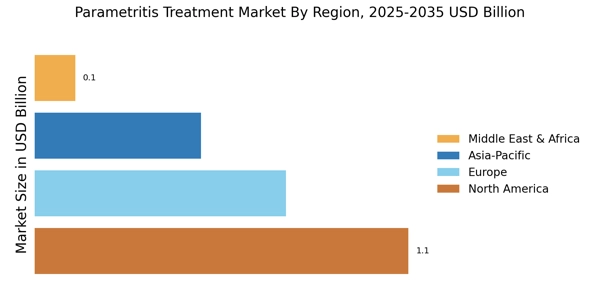Growing Awareness and Education
Growing awareness and education regarding parametritis and its treatment options significantly influence the Parametritis Treatment Market. Increased public health campaigns and educational initiatives by healthcare organizations aim to inform individuals about the symptoms and risks associated with parametritis. This heightened awareness encourages patients to seek timely medical intervention, thereby increasing the demand for treatment. Additionally, healthcare professionals are receiving enhanced training on recognizing and managing parametritis, which further contributes to early diagnosis and effective treatment strategies. As awareness continues to spread, the Parametritis Treatment Market is likely to benefit from a more informed patient population, leading to improved health outcomes and market growth.
Rising Incidence of Parametritis
The increasing incidence of parametritis is a notable driver for the Parametritis Treatment Market. Factors such as rising rates of pelvic inflammatory disease and other gynecological infections contribute to this trend. According to health statistics, the prevalence of such conditions has been on the rise, leading to a greater demand for effective treatment options. This surge in cases necessitates advancements in treatment methodologies, thereby propelling the market forward. As healthcare providers seek to address this growing concern, the focus on developing innovative therapies and improving existing treatment protocols becomes paramount. Consequently, the Parametritis Treatment Market is likely to experience significant growth as healthcare systems adapt to meet the needs of an increasing patient population.
Increase in Healthcare Expenditure
The increase in healthcare expenditure across various regions serves as a significant driver for the Parametritis Treatment Market. Governments and private sectors are investing more in healthcare infrastructure, which includes funding for research and development of new treatment modalities. This financial commitment enables healthcare providers to offer advanced treatment options for conditions like parametritis. Moreover, as healthcare systems evolve, there is a growing emphasis on preventive care and early intervention, which aligns with the treatment of parametritis. The rise in healthcare spending is expected to facilitate the development of innovative therapies and improve access to existing treatments, thereby fostering growth in the Parametritis Treatment Market.
Technological Advancements in Treatment
Technological advancements play a crucial role in shaping the Parametritis Treatment Market. Innovations in medical technology, such as the development of new antibiotics and minimally invasive surgical techniques, enhance treatment efficacy and patient outcomes. For instance, the introduction of laparoscopic procedures has revolutionized the approach to treating parametritis, allowing for quicker recovery times and reduced hospital stays. Furthermore, the integration of telemedicine and digital health solutions facilitates better patient monitoring and follow-up care. As these technologies continue to evolve, they are expected to drive the demand for parametritis treatments, ultimately expanding the market. The ongoing research and development efforts in this domain suggest a promising future for the Parametritis Treatment Market.
Collaboration Between Pharmaceutical Companies and Research Institutions
Collaboration between pharmaceutical companies and research institutions is emerging as a vital driver for the Parametritis Treatment Market. Such partnerships foster innovation and expedite the development of new treatment options. By pooling resources and expertise, these collaborations can lead to breakthroughs in understanding the pathophysiology of parametritis and identifying novel therapeutic targets. Furthermore, joint clinical trials can enhance the efficiency of the drug development process, ultimately bringing effective treatments to market more rapidly. As these collaborations continue to expand, they are likely to stimulate growth in the Parametritis Treatment Market, ensuring that patients have access to the latest advancements in treatment.


















Leave a Comment